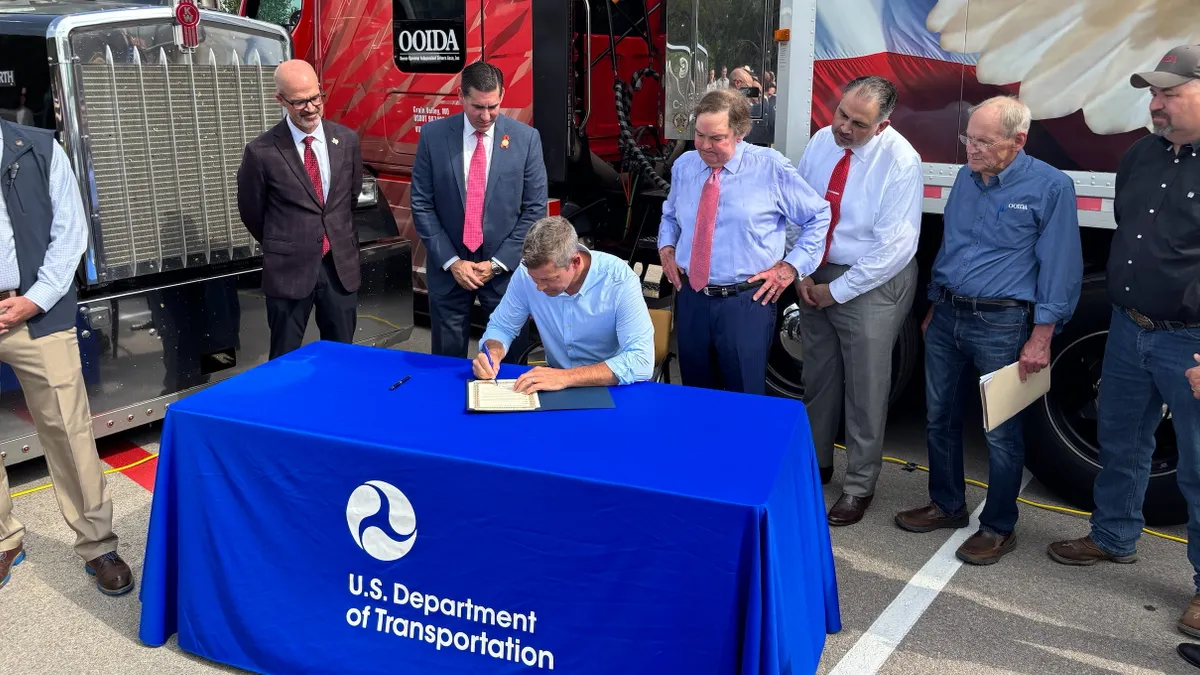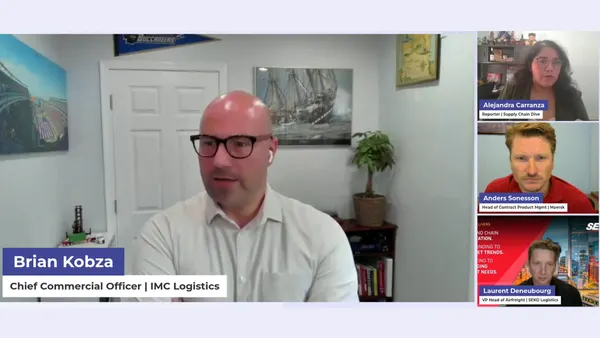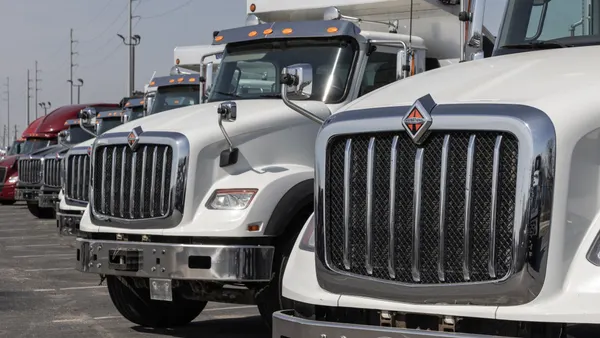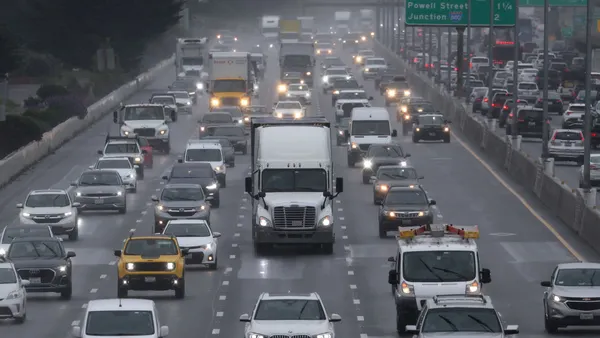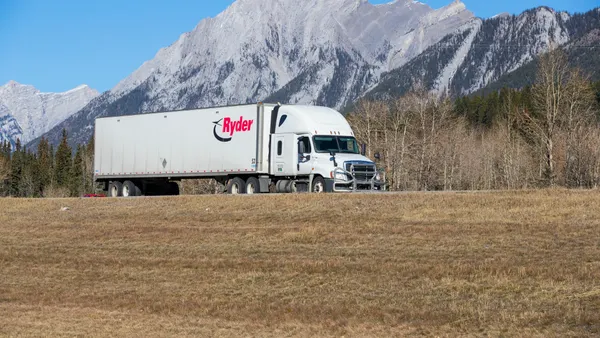Dive Brief:
- Government and supply chain stakeholders announced multiple incentives for trucking companies operating at the congested West Coast ports.
- The Federal Maritime Commission moved to allow the ports of Los Angeles and Long Beach to charge the traffic mitigation fee only between 7 a.m. and 5:59 p.m., Mondays through Fridays. The temporary fee suspension would last from Dec. 1 to Jan. 31, 2022.
- Ocean carrier CMA CGM offered credit for timely pickups. The France-based carrier said it will give $100 per container made during daytime pickups, from Monday to Friday. Night and weekend pickups receive $200 per container.
Dive Insight:
Supply chain problems, many jointly related to trucking and West Coast ports, have frustrated transport executives and national leaders for months. But the regulatory relief may be chipping away at a persistent problem in 2021. Much of that relief, of late, has been aimed at the trucking end.
Trucking is key to unclogging the ports because trucks are the main tool to move the containers, full and empty, out of the yards. Frustration with systems at the ports led Matt Schrap, CEO of Harbor Trucking Association, to tell Transport Dive that the empty containers were not being sent back to the ocean carriers fast enough. Instead, drivers with empty containers were being turned away at their appointed times. That also led chassis to run short, because the containers sit atop the chassis.
This bottleneck has caused massive media attention to focus on the ports, with many citing the driver shortage as a cause. Schrap denied that and said it was a productivity issue inside the ports. And there is a lot of productivity needed.
Since the economy rebooted, the ports have been slammed for almost a year with a surge in ocean-carrier traffic from Asia. The giant Southern California complex takes in about 40% of imported goods, all through two municipally run ports in San Pedro Bay.
The percentage of shipments experiencing dwell greater than five days at the ports of Los Angeles and Long Beach rocketed from 5.7% in July 2020 to 32.8% in September, according to data from the Pacific Merchant Shipping Association.
The White House and port officials scrambled to address the recovery-related problems, with its newly minted White House Supply Chain Disruptions Task Force. Many of their solutions did not focus on pouring more drivers into the ports, but instead focused on making it easier for trucking firms to get containers in and out of the ports.
Government leaders see efforts to unclog the twin ports of Los Angeles and Long Beach bearing some fruit, according to President Joe Biden. Biden touted the three actions taken by the FMCSA, the FMC and ocean carrier CMA CGM in a public speech on Wednesday. Over the last month, the number of containers left sitting on docks has gone down by 40%, Biden said.
As of Thursday, the number of ships at the ports dropped to 132, including 74 at anchor or loitering, and 58 at berth, according to the Marine Exchange of Southern California.
The Biden administration encouraged the suspension of the traffic mitigation fee, in an attempt to unclog the West Coast ports and encourage more freight movement during off-hours. But at least one member of the FMC said more is needed from the ports, carriers and government agencies regarding the issue of appointments with drivers.
"For a 24/7 or off-peak gate hours program to be successful, it means that all supply chain partners need to be rowing in the same direction," Carl W. Bentzel, a commissioner with FMC, said in a statement.
Bentzel said he also has concerns with the appointment system, which gives truckers times to pick up freight or drop off containers.
"The current appointment system has not been successful in ensuring that appointments will be kept," said Bentzel. "Each terminal operates its own system, and this balkanization impacts the effectiveness of the appointment process. The industry should explore how to strengthen this program."






